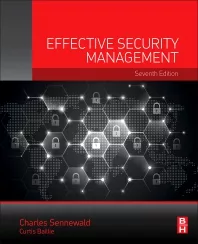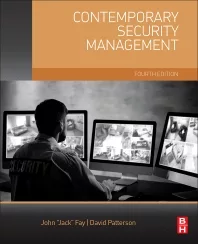Security Strategy
The three "T's" of device lifecycle management
Effective device lifecycle management can prevent disruptions and enhance efficiency and security of an organization.

leezsnow / E+ via Getty Images
In today's highly technological world, devices are at the heart of organizational operations. Whether it's a sophisticated surveillance camera with advanced features or a simple access control panel, the smooth functioning of these devices is critical for seamless operations across the enterprise. The failure of even a single device can trigger a cascade of frustration and reduced productivity. This is why effective device lifecycle management is so important; it can prevent disruptions and enhance both the efficiency and security of an organization. But how can organizations ensure successful device lifecycle management? They simply need to follow the three "T's": Thinking, Tools, and Timelines.
Thinking ahead to avoid trouble
Before taking any action, whether it involves purchasing a new device or hiring additional staff, having a comprehensive plan in place is the first key to success. The first consideration in any project should always be compliance to all applicable standards. Ensuring that your organization, employees and technology all adhere to necessary standards and internal policies is a fundamental building block, and without it, whatever you build upwards will eventually come tumbling down.
Next comes the strategic layering of technology. When introducing new technologies, it should be planned to complement and build upon existing security measures rather than replace them. This approach maximizes the value of current devices and enhances overall security. This strategic layering, though, requires a thorough understanding of the current technology landscape within the organization. It also requires identifying the gaps that new technology can fill, as well as how older devices can complement them.
People are also critical in this initial planning stage. The lines between IT (Information Technology) and OT (Operational Technology) are no longer distinctly separate. This newfound collaboration between IT and OT should be rooted in open communication channels and defined roles and responsibilities. By approaching technology in this way, organizations can ensure that there are no overlaps or gaps in responsibility, mitigating security vulnerabilities and operational inefficiencies tied to poor staffing. Key questions to address here include: Who is responsible for updates? To whom do they communicate this information? Who decides the level of security or hardening required? Answering these questions at the onset lays a solid foundation for effective, long-term device lifecycle management.
The right tools for the job
With a solid plan in place, the next step is to equip your organization with the right tools for the goals you’re aiming to achieve. These can be categorized into three main types: tools for designing, tools for implementation, hardening, and designing, and tools for maintaining devices.
Tools for designing devices ensure that configurations remain consistent across all devices during the design or programming phase. These tools often include templates that standardize future programming efforts. For example, using standardized templates for device configurations can streamline the deployment process, reduce errors, and ensure consistency across the board. Additionally, organizations should pay close attention to hardening guides provided by manufacturers from the outset to avoid problems later, as these guides serve as valuable resources during the design stage and offer best practices for configuring devices securely.
By working together, IT and OT can ensure that devices remain in optimal condition and that any issues are promptly addressed throughout their lifecycle.
In the implementation stage, the collaboration between IT and OT becomes crucial. Implementation tools help to ensure devices are onboarded securely and hardened appropriately, protecting against both cyber and physical threats. Devices should be securely mounted and placed in safe locations — an OT concern — while the networks they connect to must be fortified against cyber threats — which lie in the IT realm. You wouldn’t want to mount a camera in a spot where it’ll be easily damaged, just like you wouldn’t want to connect it to an unsafe network. Features like encryption, formerly just an IT concern, ensure data transmitted between devices and systems remains confidential and protected from interception or tampering. However, now, even this approach requires collaboration between IT and OT teams to identify the best encryption methods and ensure they are implemented consistently across all devices.
Finally, maintenance tools are essential for successful device lifecycle management, so they need to be user-friendly and accessible to all relevant parties. These tools include ones that provide visibility into the device's lifecycle, including warranty status, end-of-life dates, and support options from manufacturers. Maintenance also involves staying updated on bug fixes that affect the entire network, and knowing what exactly needs to be done to smash those bugs. Using centralized management systems can provide a single pane of glass view of all devices, their status, and any pending maintenance activities — making response times faster than ever and mitigating costly downtime.
Timelines for thriving
The final "T" in device lifecycle management is timelines. Every device has its own set of timelines, including those for design, implementation, maintenance, and decommissioning. These timelines are not the sole responsibility of any one department; rather, they require a collaborative effort across IT and OT teams.
Let’s start with a few shorter timelines. For instance, the design timeline: IT and OT must collaborate here, as OT will know about needed capabilities, and IT will know about how that device will go on the network and any necessary maintenance activity. During design, even though it’s a short timeframe to work together, the two departments need to strive for a happy medium — what does OT need, and can IT maintain it effectively?
Another short timeline is the implementation phase, where IT takes the lead and focuses on device hardening and selecting the appropriate security measures to protect the organization. This phase involves configuring devices according to security best practices, testing them to ensure they meet the required standards, and deploying them into the production environment. For instance, IT would configure firewalls, set up access controls, and apply security patches to ensure that the new devices are protected from potential threats.
Perhaps our longest timeline is the maintenance phase, where once a device is in service, it requires ongoing care. The division of responsibilities between IT and OT can vary depending on the organization, update schedule, and the specific device. Historically, OT was responsible for maintenance, but the rise of cybersecurity threats has necessitated greater IT involvement. Now, effective collaboration between IT and OT is critical. Maintenance activities can include regular software updates, hardware inspections, performance monitoring, and responding to any issues that arise. For example, IT might be responsible for applying security patches and updates to ensure that devices remain protected from vulnerabilities, while OT might handle routine inspections and performance monitoring to ensure that devices continue to operate effectively.
Decommissioning, our final short timeline, involves securely wiping and disposing devices, which is once more largely the responsibility of IT. Proper decommissioning ensures that sensitive data is not left on devices and that they are disposed of in an environmentally friendly manner. This phase includes tasks such as data wiping, physical device destruction, and recycling of components.
By working together, IT and OT can ensure that devices remain in optimal condition and that any issues are promptly addressed throughout their lifecycle. Through careful planning, the use of appropriate tools, and adherence to timelines, organizations can effectively manage their devices' lifecycles. By doing so — keeping their devices up to date and their people operating as a unit — they ensure that devices remain secure, reliable, and efficient throughout their operational lifespan.
Looking for a reprint of this article?
From high-res PDFs to custom plaques, order your copy today!








